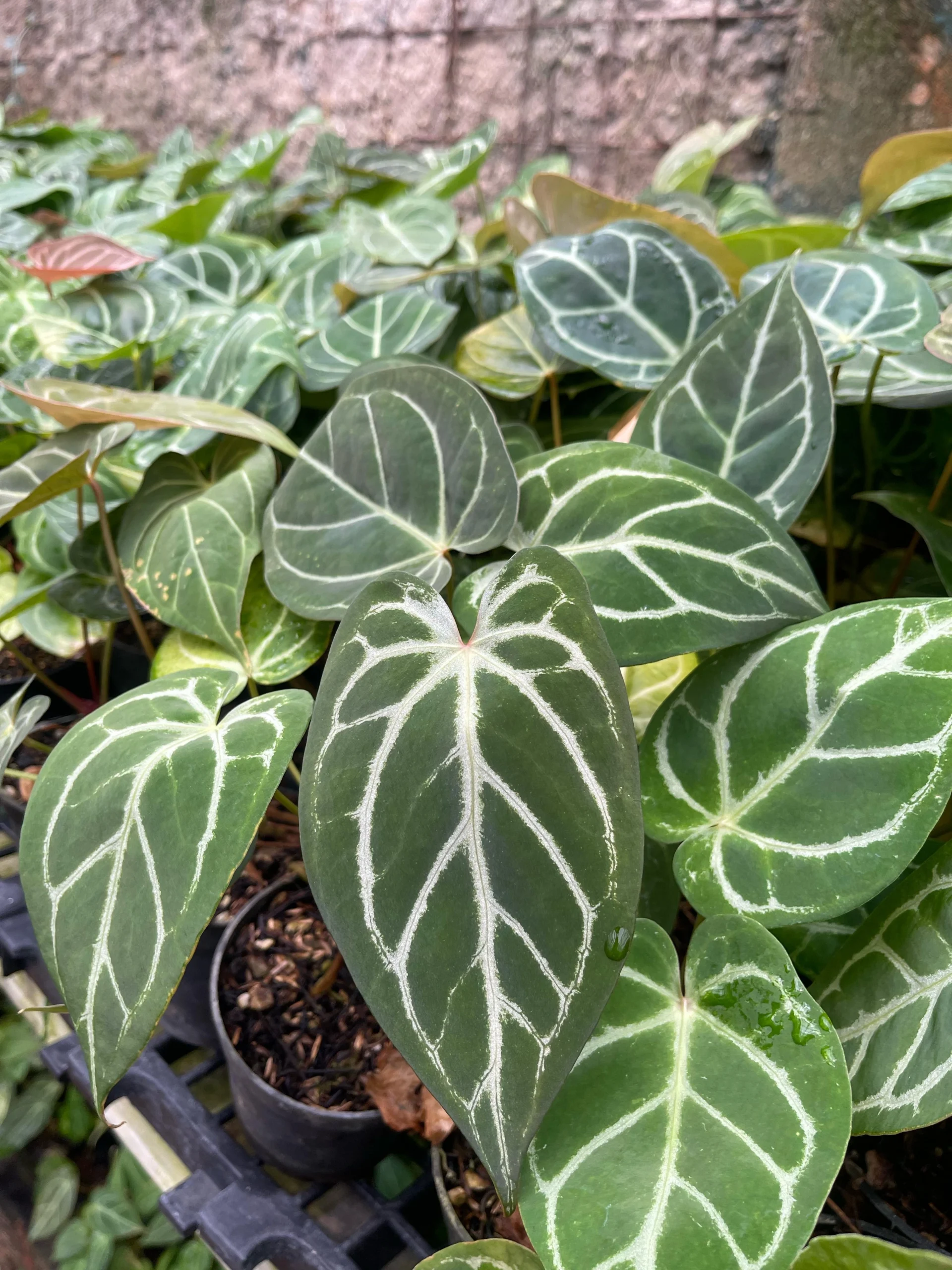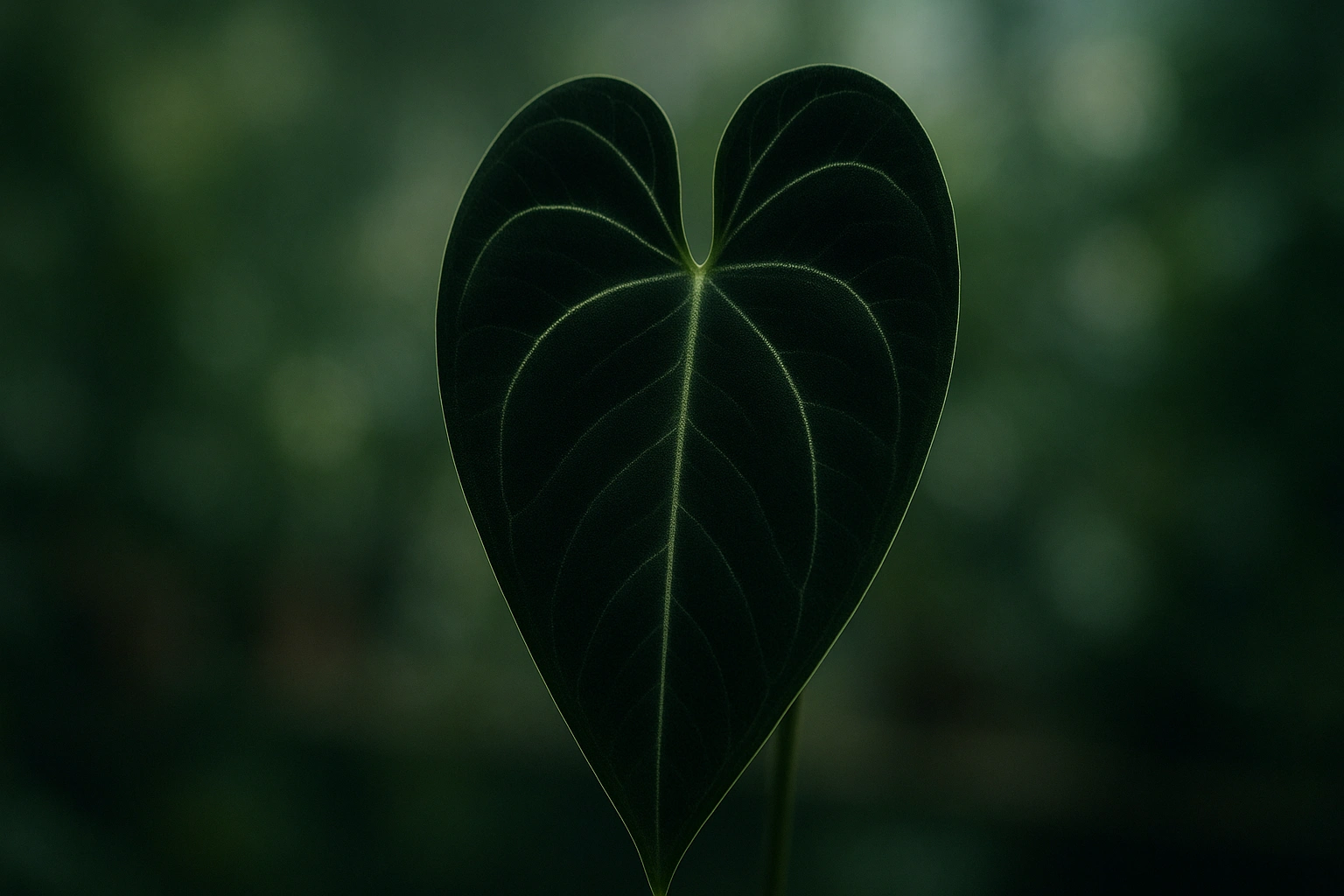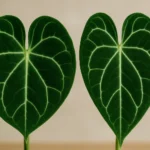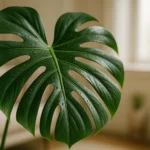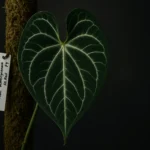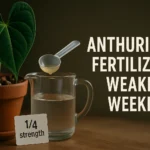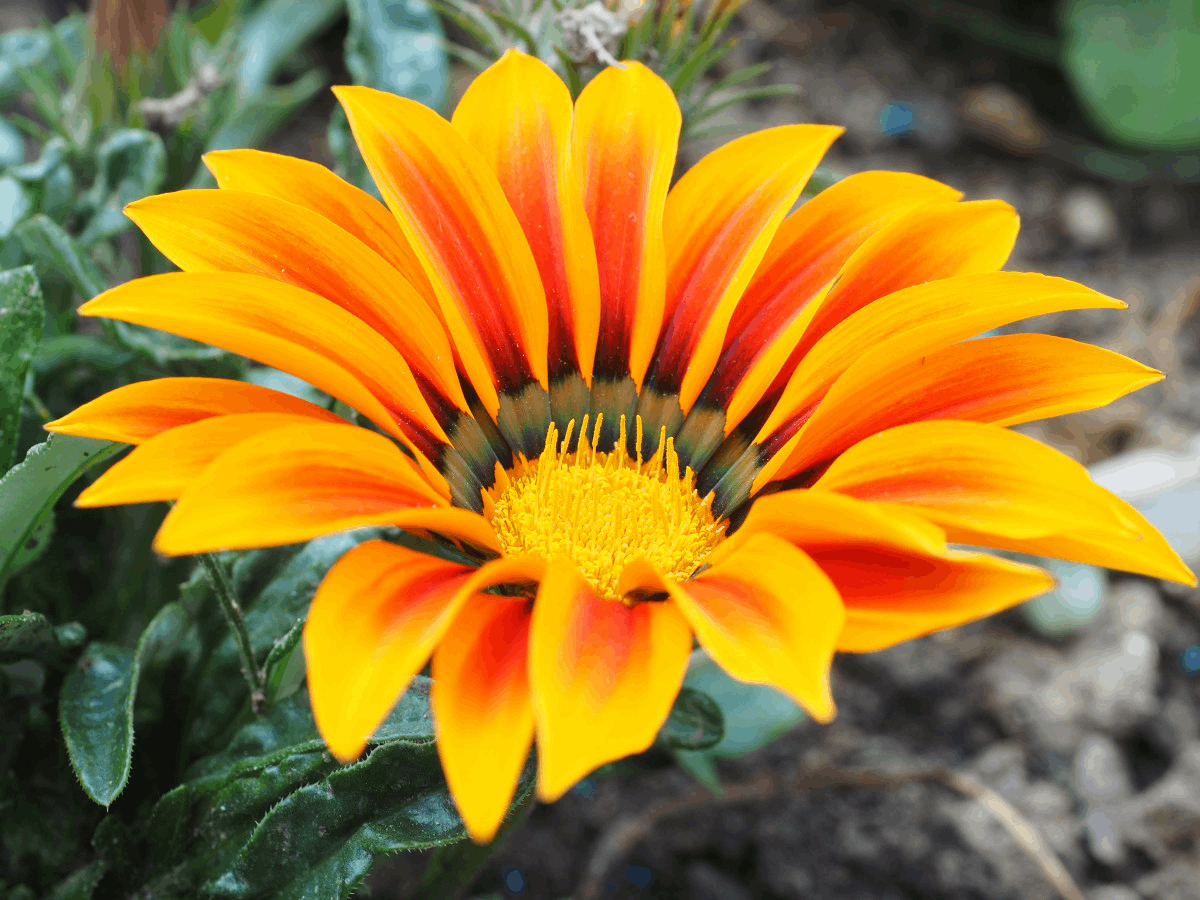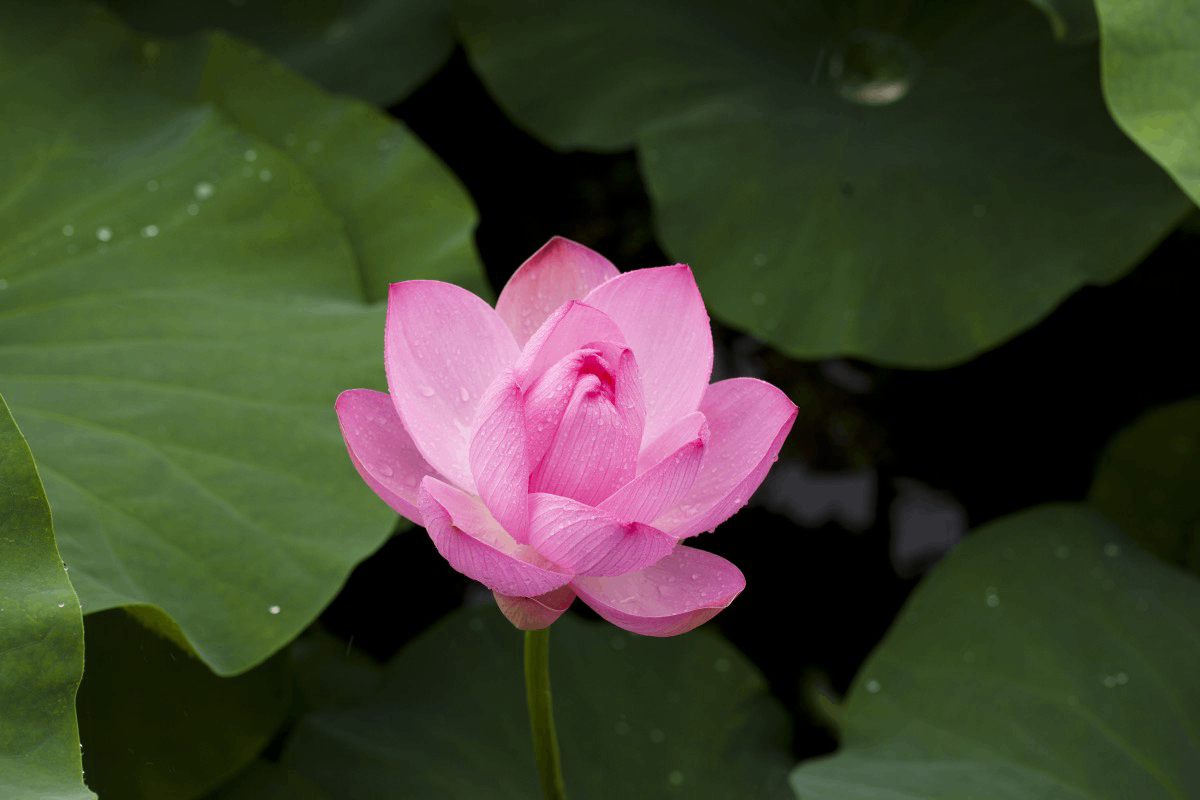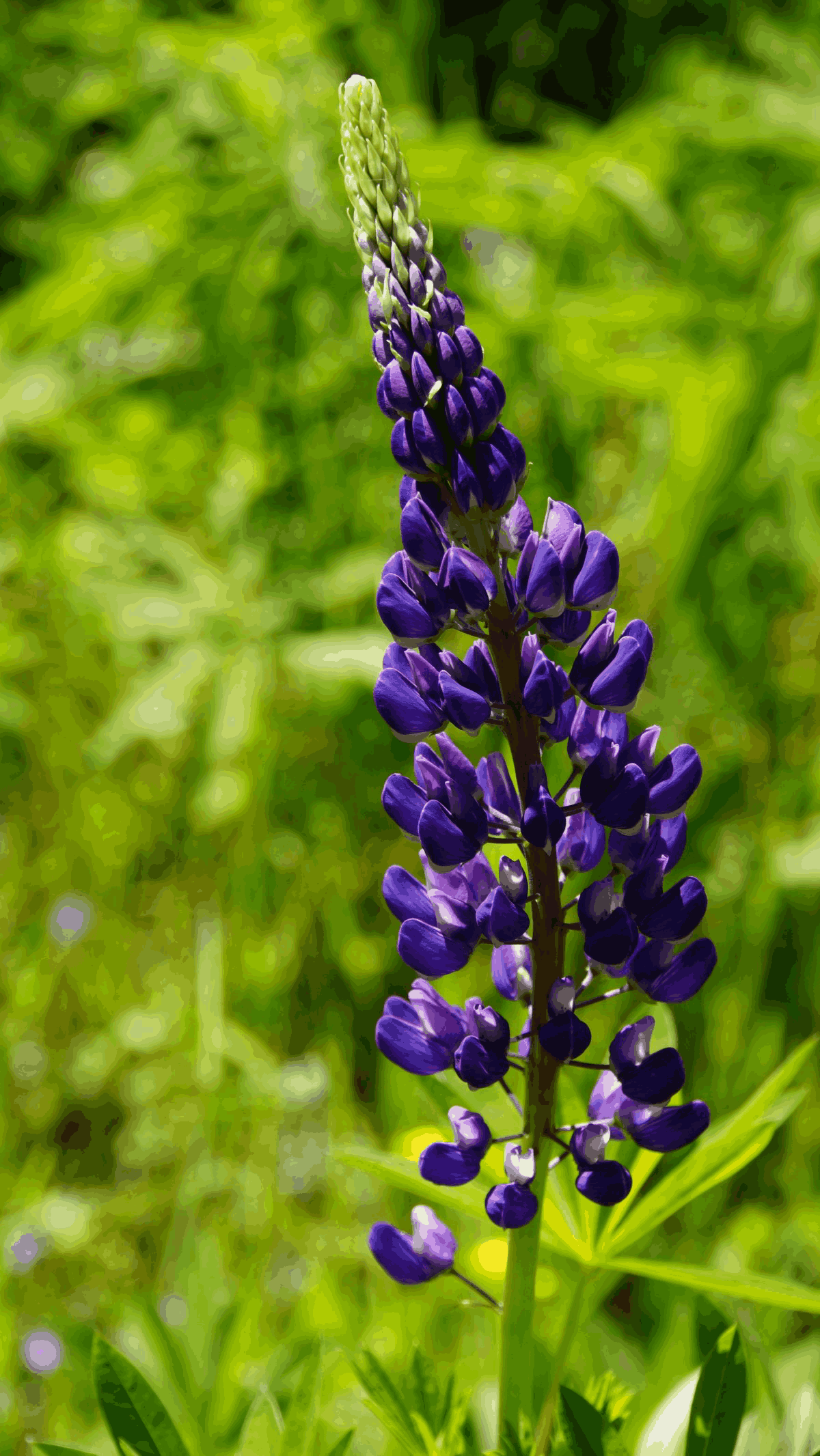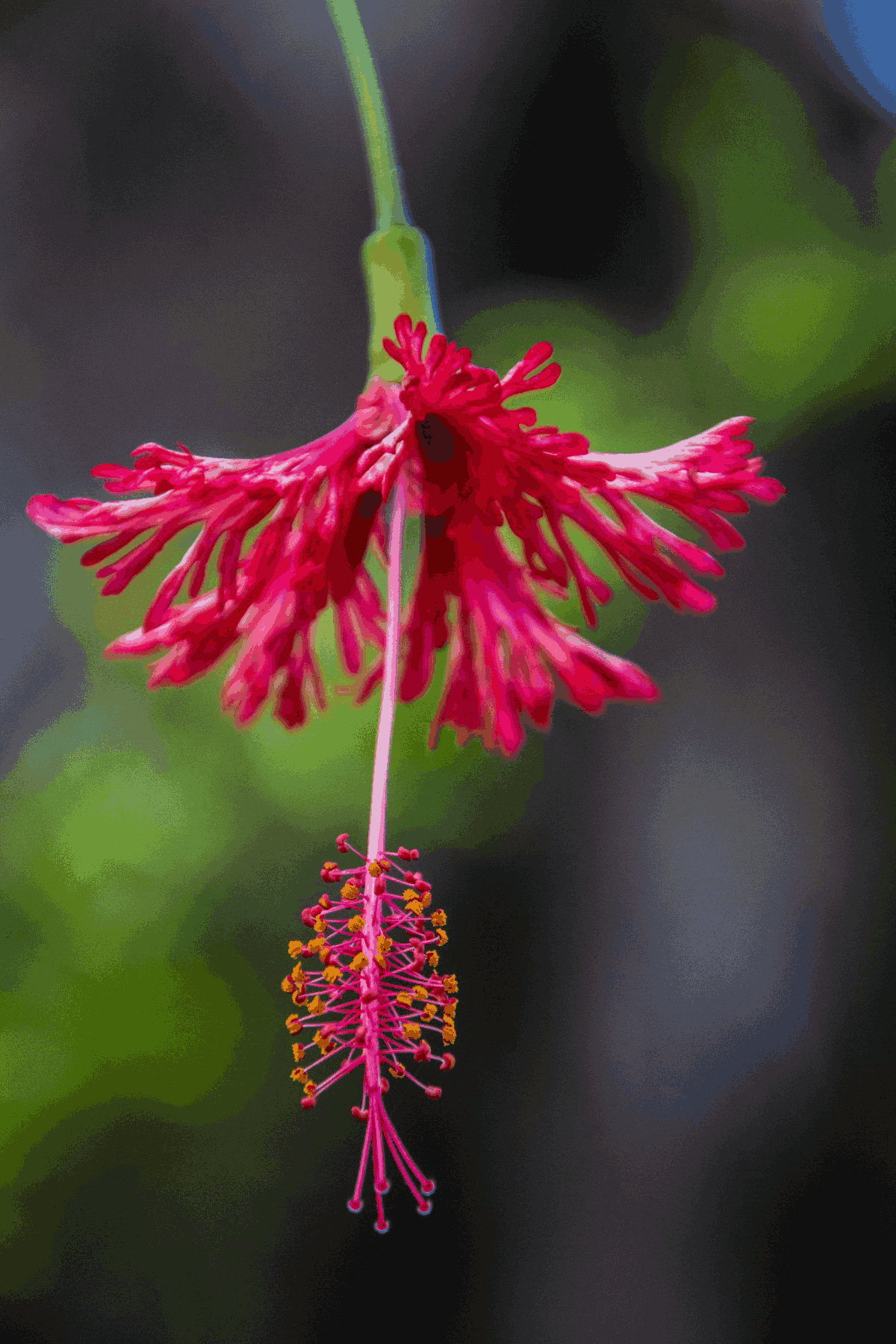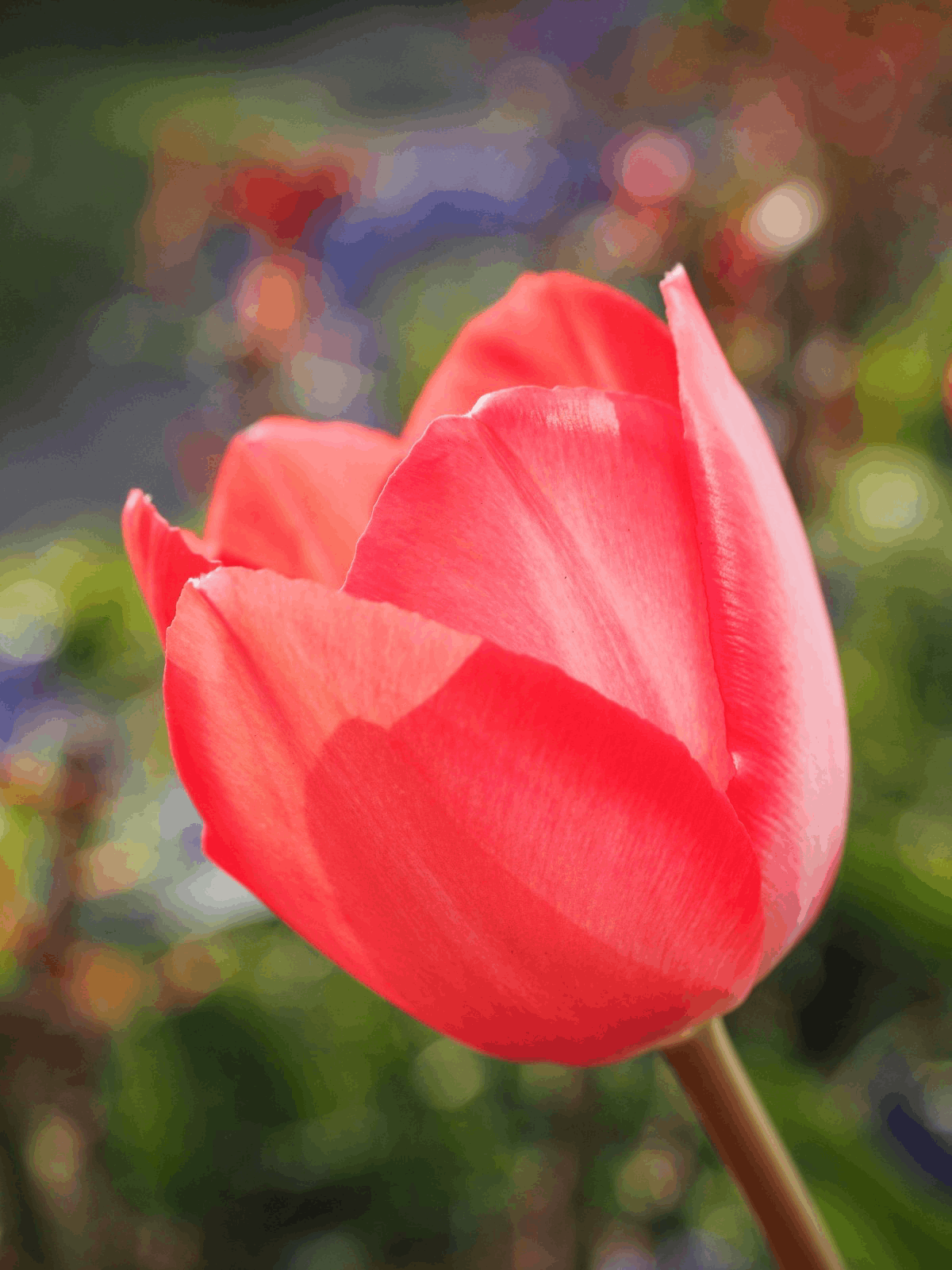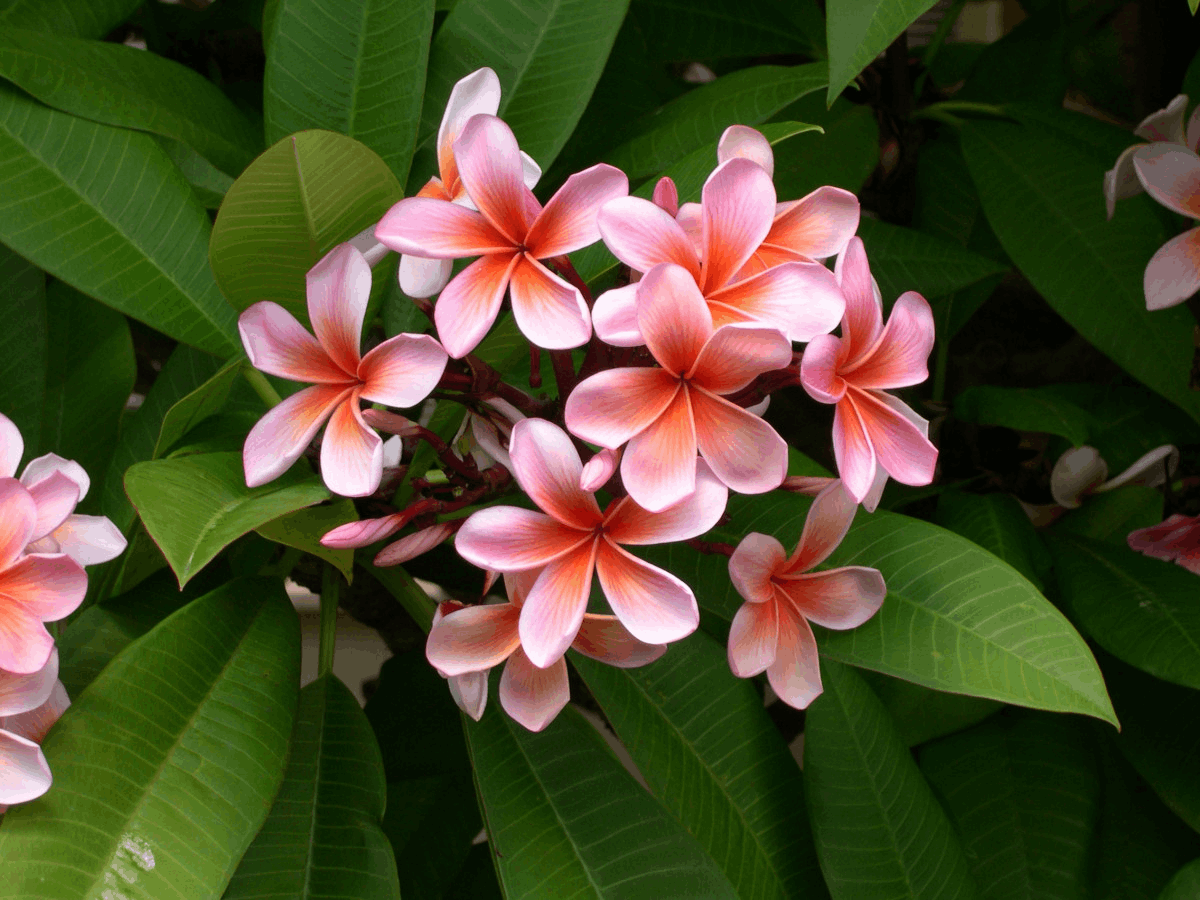GreenWandering
Discover the world’s most unique leaves.
The Quiet Icon of the Anthurium World
In a world of bold variegation and oversized leaves, few plants captivate through subtlety. Anthurium papillilaminum does just that—quietly commanding attention with flawless form, velvety texture, and refined detail. Collectors often find themselves drawn to this species as their tastes mature, shifting from spectacle to nuance. Yet its elegance comes with challenges, especially in mastering light balance.
What Is an Anthurium Papillilaminum?
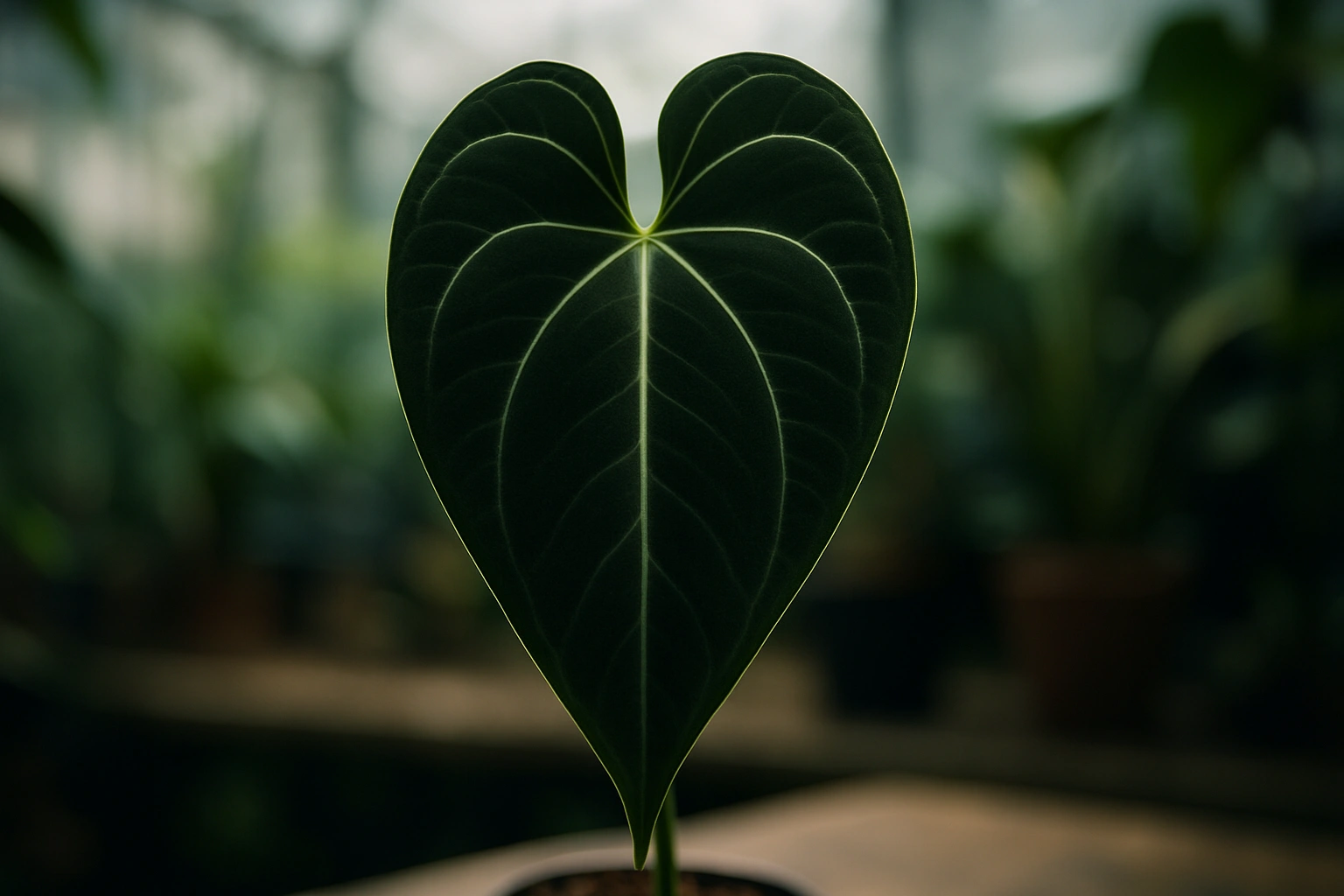
A Study in Subtlety
Leaf Shape and Venation
Color and Texture
The leaves are famous for their deep, dark green, almost black coloration, which is best maintained in lower light conditions. The texture is a defining trait, and its name gives us a clue: the lamina (leaf blade) is covered in microscopic papillae. These tiny cellular bumps on the leaf surface are responsible for scattering light rather than reflecting it directly, which is what creates the signature matte, velvety appearance that collectors adore. This fine, low-pile velvet is distinct from the plusher, more deeply quilted feel of other species. New leaves provide their own spectacle, emerging in a spectacular flush of bronze, red, or orange due to high concentrations of anthocyanins—protective pigments that shield the tender new growth from sun damage—before slowly hardening off and deepening to their final, dramatic dark hue over several weeks.
Growth Habit
This species has a compact, terrestrial growth habit that makes it highly manageable for indoor growers. It grows from a central, creeping rhizome that elongates over time, producing leaves on sturdy, D-shaped petioles one at a time. It is not a climber and will not require a moss pole or trellis, instead preferring to spread horizontally, albeit very slowly. Its relatively contained growth makes it an excellent specimen for growers who want a high-impact plant without it taking over their space. It’s important for collectors to know that different forms exist in the hobby (e.g., ‘Fort Sherman’, ‘RA#’), which can exhibit slight but desirable variations in leaf shape, degree of elongation, and even the velvety texture, making the hunt for specific forms part of the appeal.
Mastering the Environment
Success with A. papillilaminum hinges on providing unwavering stability and deeply understanding its preference for lower light, a direct inheritance from its life on the shaded rainforest floor. While general aroid advice, such as the foundational care principles outlined by institutions like the Royal Horticultural Society (RHS), provides a good start, this species demands a more specialized and tailored approach to truly flourish. Its sensitive nature means it is far less forgiving of environmental fluctuations than more common houseplants. Mastering its care requires attention to a delicate balance between humidity, airflow, light, and watering, which are the pillars of its health. Below are the essential parameters you must control to cultivate a thriving specimen.
- Light: Low to medium bright, indirect light is best. It will lose its deep coloration in light that is too bright.
- Watering: Prone to root rot. Water thoroughly only when the top few inches of the substrate are dry.
- Humidity: High humidity is essential, aim for 65-80%.
- Temperature: Keep it warm and stable, between 65-80°F (18-27°C). Protect from drafts.
- Airflow: Crucial for preventing leaf fungus and ensuring root health in high humidity.
Soil & Potting Mix
Like its sensitive relatives, it requires an extremely airy, fast-draining mix that provides ample oxygen to the roots. A pre-made mix is rarely sufficient; you must create your own blend. A successful recipe consists of medium-grade orchid bark, coarse perlite or pumice, horticultural charcoal, and a minimal amount of a moisture-retentive material like high-quality sphagnum moss or coco chips. The horticultural charcoal is a key ingredient, as it helps to keep the mix “sweet” by absorbing impurities and preventing bacterial growth around the delicate root system. The goal is to achieve a chunky, porous structure that allows water to pass through freely, leaving the substrate barely moist and full of air pockets, perfectly mimicking the loose leaf litter of its native habitat.
Light Positioning and the Role of Grow Lights
This is arguably the most misunderstood and critical aspect of its care. Unlike Monsteras that crave bright light, A. papillilaminum thrives in the shadier parts of your grow space. Too much light is the primary cause of its leaves appearing faded, bleached, or ‘washed out.’ This specific low-light requirement makes it a perfect candidate for cultivation under **grow lights**, which give you complete and consistent control over its environment. For optimal results, position the plant at the edge of your grow light’s footprint, not directly under the intense center beam. For advanced growers using a light meter, aim for a lower Photosynthetic Photon Flux Density (PPFD) of around 50-150 µmol/m²/s. This controlled, gentle light, provided over a consistent photoperiod of 12-14 hours, will bring out the deepest, darkest, and most velvety colors the plant can possibly produce.
Fertilization and Nutrition
To support its slow but steady growth, you must feed your plant consistently but gently during the primary growing season of spring and summer. A “weakly, weekly” approach is often the most successful strategy. Use a high-quality, balanced liquid fertilizer that contains a full spectrum of micronutrients, diluted to 1/4 or 1/2 of the recommended strength, and apply it with every watering. It is also wise to consider supplementing with a Calcium-Magnesium (Cal-Mag) solution periodically, perhaps once a month, especially if you use filtered, distilled, or RO water, as these water sources lack the minerals necessary to prevent deficiencies that can cause stunted growth, leaf curl, or yellowing.
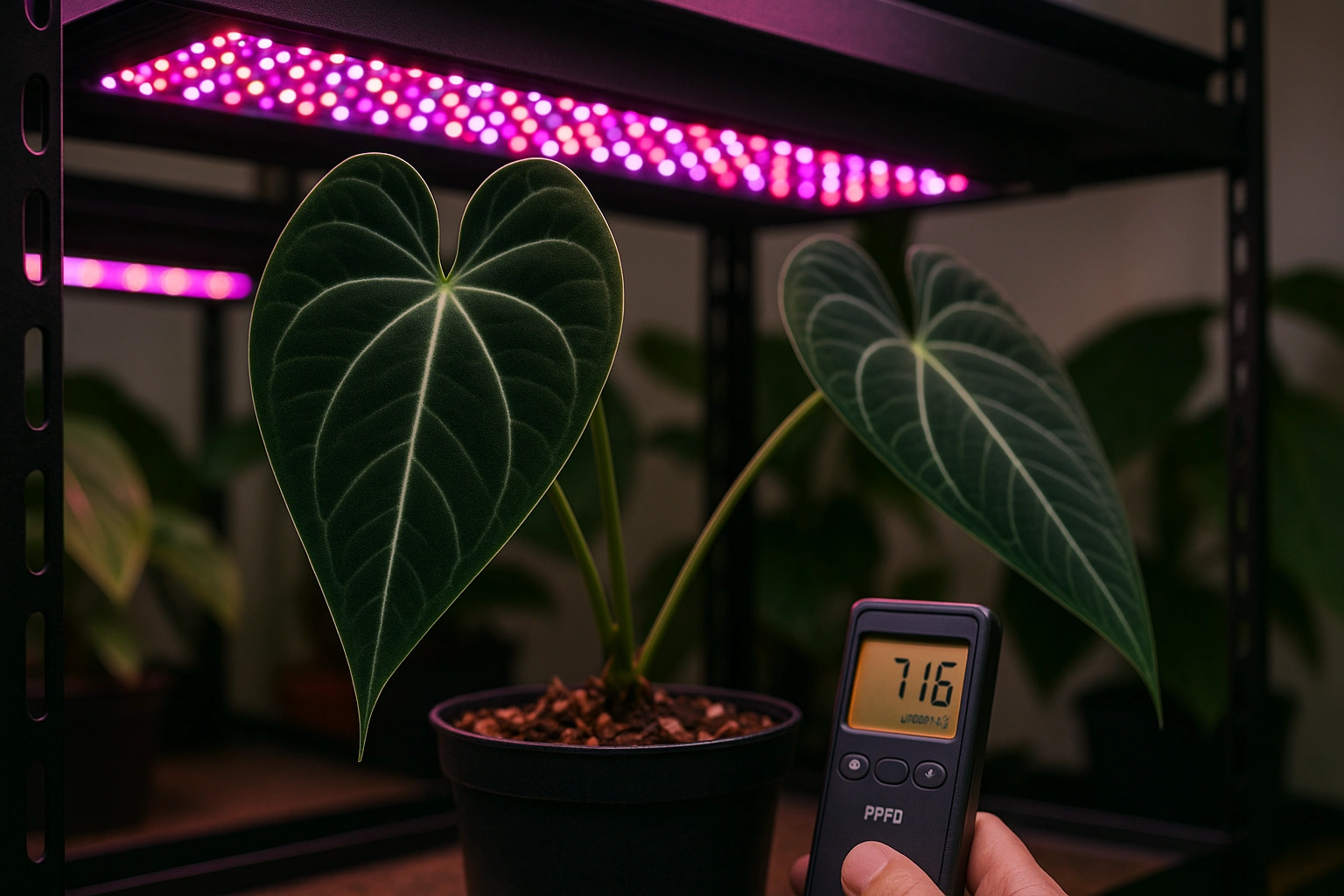
Buying Guide Selecting a ‘Papi’
Expert Tips & Best Practices
Transitioning from simply keeping your plant alive to helping it truly thrive involves mastering a few advanced techniques and developing a keen sense of observation. While the basic care guidelines provide the foundation, long-term success with a collector’s plant like A. papillilaminum comes from understanding the subtle interplay between environmental factors. The following best practices are designed to elevate your cultivation skills, helping you to not only grow your plant but also to encourage larger leaves, deeper coloration, and more vigorous, consistent growth over time. Implementing these tips will help you create a microenvironment that closely mimics its native habitat, which is the ultimate goal of any serious aroid collector.
- The Humidity-Airflow Symbiosis: High humidity is useless, and in fact dangerous, without sufficient airflow. Stagnant, damp air is the primary cause of fungal and bacterial leaf spots, to which these velvety leaves are particularly susceptible. A small, oscillating fan aimed near your plant (but not directly at it) can dramatically improve its health by constantly moving the air, strengthening the leaves, and preventing harmful pathogens from settling.
- Mastering the Wet-Dry Cycle: The biggest mistake growers make is watering too frequently out of fear of the plant drying out. The goal is not to keep the soil constantly moist, but to allow it to cycle from fully saturated (immediately after watering) to almost completely dry. This crucial drying period forces roots to grow in search of water and, more importantly, provides the essential oxygen that prevents suffocation and rot.
- Reading the New Leaves: The size, shape, and health of each new leaf serves as a detailed report card on your care over the last few months. If new leaves are progressively larger, darker, and perfectly formed, your conditions are excellent. If they emerge smaller, misshapen, or lighter in color, it’s often a clear sign of insufficient light, a nutrient deficiency, or an underlying root issue that needs to be addressed.
- Patience During Acclimation: After the stress of shipping, a plant’s primary focus is survival and root regeneration, not producing beautiful new leaves. Upon arrival, isolate the plant, provide it with high humidity and very gentle light, and resist the powerful urge to repot or fertilize for at least a month, often longer. Allowing it to build back its strength and adapt to its new home first is the single most important step to long-term success.
Comparison: Papillilaminum vs. Other Dark Anthuriums
| Plant | Texture | Leaf Shape | Venation | Light Need |
|---|---|---|---|---|
| A. papillilaminum | Matte, low-pile velvet | Elongated, triangular heart | Subtle, glowing | Low-Medium |
| A. dressleri | Plush velvet, bullate | Round heart, opens with age | Less distinct | Low-Medium |
| A. crystallinum | Velvety with a slight sheen | Large, round heart | Stark, silver/white | Medium-Bright |
| A. ‘Carlablackiae’ | Matte velvet, very dark | Very elongated, prominent lobes | Subtle | Low-Medium |
Common Mistakes to Avoid
- Too Much Light: The most common mistake. This fades the leaves and can cause scorching. Remember, this plant evolved on the dark forest floor.
- Overwatering: This is about frequency, not volume. Like all velvety anthuriums, its roots need oxygen and will suffocate and rot in perpetually soggy soil.
- Stagnant Air: High humidity without airflow is an invitation for fungal and bacterial spots on the delicate leaves.
- Using a “One-Size-Fits-All” Aroid Mix: It needs a much chunkier, airier mix than many common aroids to ensure root health.
- Fertilizing a Stressed Plant: Only feed a plant that is actively and happily growing. Fertilizing a sick or stressed plant is like forcing a sick person to run a marathon.
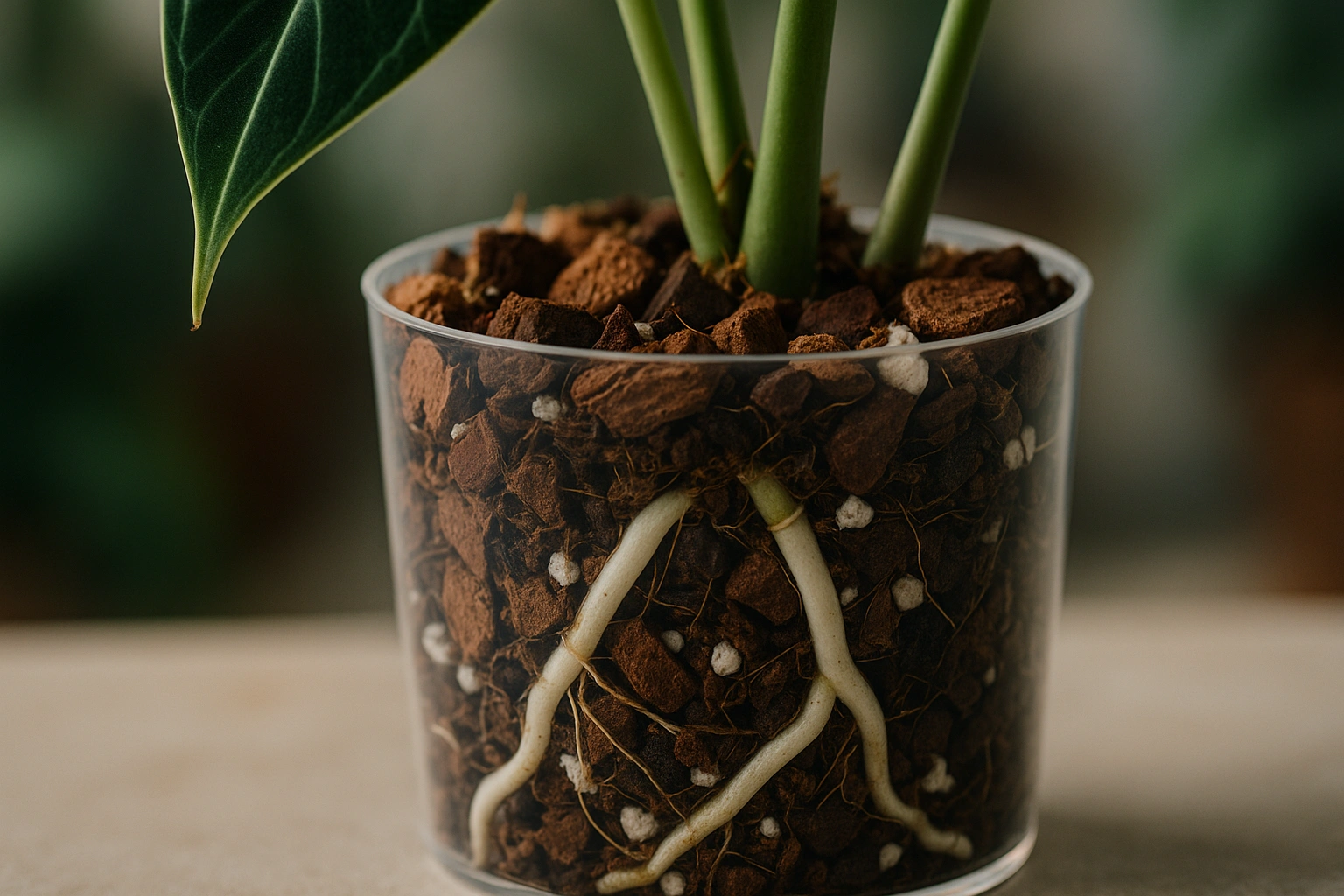
Frequently Asked Questions (FAQ)
Why are my Anthurium papillilaminum leaves getting lighter or ‘washed out’?
This is a classic sign of too much light. Anthurium papillilaminum prefers lower light conditions compared to other aroids. Excessive light can bleach the deep color from its leaves. Move it to a shadier spot or reduce the intensity/duration of your grow lights.
Is Anthurium papillilaminum a slow grower?
Yes, it is generally considered a slow to moderate grower. It tends to focus on establishing a strong root system before putting out new foliage, especially when young. Consistent conditions and proper care will encourage the steadiest growth.
How can I enhance the dark coloration of my papillilaminum?
Optimal coloration is achieved in lower light conditions and with balanced nutrition. Avoid harsh light, which fades the leaves. Ensure you are using a well-rounded fertilizer that isn’t excessively high in nitrogen, as this can sometimes promote greener, less dark foliage.
What’s the difference between Anthurium papillilaminum and dressleri?
While both are dark and velvety, the key differences are in shape and texture. Papillilaminum typically has a more elongated, triangular leaf with a smoother, less bullate (bubbly) texture. Dressleri has a rounder, more heart-shaped juvenile form and is significantly more bullate.
Do I need grow lights for Anthurium papillilaminum?
While not strictly necessary if you have a suitable window, grow lights are highly recommended. They provide the consistent, gentle light that this species loves, allowing you to place the plant anywhere and ensuring it thrives year-round, regardless of natural light availability.
Conclusion The Art of Nuance
